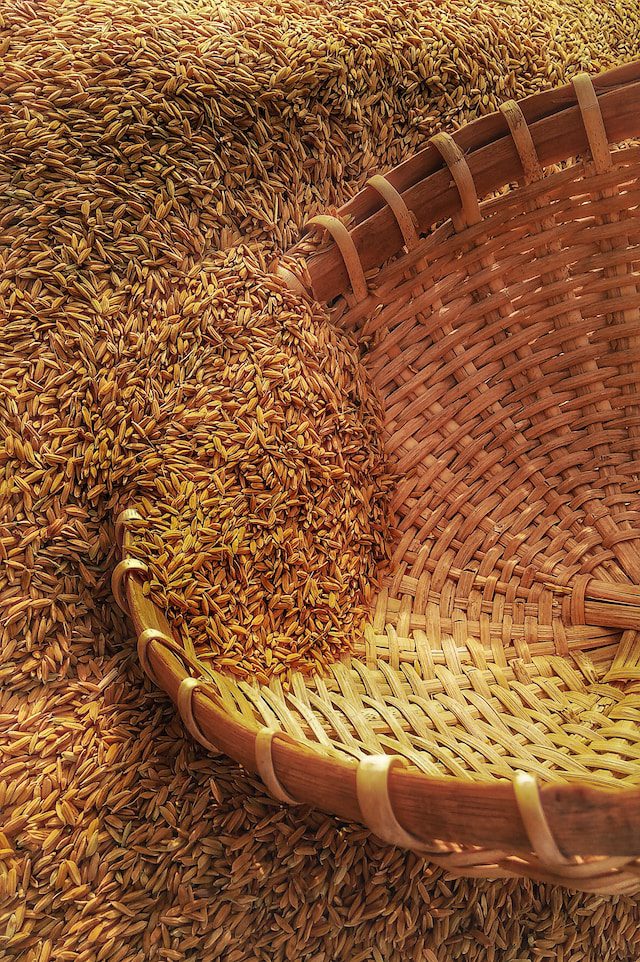
As an Amazon Associate I earn from qualifying purchases.
Mycotoxins, although largely unfamiliar to many, play a significant role in our environment and can have far-reaching consequences on human health and agriculture. In this article, we will delve into the world of mycotoxins, exploring what they are, why they matter, and the potential risks they pose. Let's unravel the mysteries surrounding these hidden dangers.

what are mycotoxins
What are Mycotoxins and why are they Important?
Mycotoxins are a group of poisonous substances generated by specific fungi, commonly referred to as moulds. These moulds have a tendency to flourish in diverse settings, such as food crops, indoor spaces, and decomposing organic matter. The emergence of mycotoxins is either a result of their inherent presence in foods or their development under environmental conditions conducive to mould proliferation. These compounds are of significant concern due to their capacity to induce health issues in both humans and animals.
Nature and Occurrence
Mycotoxins are produced by certain types of moulds as secondary metabolites, meaning they are not essential for the fungi's growth but are byproducts of their metabolic processes. These toxins can accumulate in various commodities, including grains, nuts, fruits, and dairy products, posing a potential risk to human and animal consumption. Environmental conditions like humidity, temperature, and inadequate storage facilities can escalate mould growth and mycotoxin production.
Health Implications of mycotoxins
The ingestion or inhalation of mycotoxins can lead to a range of health problems, depending on the type and concentration of the toxin, as well as an individual's susceptibility. Common health issues associated with mycotoxin exposure include:
- Acute Toxicity: Some mycotoxins have an immediate toxic effect upon ingestion, causing symptoms such as nausea, vomiting, diarrhoea, and in severe cases, organ damage or failure.
- Chronic Health Effects: Prolonged exposure to low levels of mycotoxins might result in chronic health conditions, including respiratory issues, immune system suppression, and even carcinogenic effects.
- Allergic Reactions: Mould spores and mycotoxins can trigger allergic reactions in sensitive individuals, leading to symptoms like coughing, sneezing, and skin irritation.
Prevention and Mitigation of Mycotoxin Poisoning
Efforts to minimize mycotoxin contamination involve a combination of preventive measures and regulatory guidelines. These include:
- Good Agricultural Practices: Implementing proper cultivation, harvesting, and storage techniques can hinder mould growth and subsequent mycotoxin production in crops.
- Quality Control in Food Processing: Rigorous inspection, sorting, and quality control during food processing can help eliminate contaminated portions and products.
- Environmental Monitoring: Regular surveillance of indoor environments and living spaces can identify mould infestations, facilitating timely remediation.
- Research and Regulation: Continuous research to understand mycotoxin behaviour and regulatory measures to limit their presence in food and feed products.
In conclusion, mycotoxins serve as a stark reminder of the potential dangers lurking within mould-contaminated environments. By comprehending their nature, occurrence, and health implications, individuals and industries can adopt effective strategies to curtail their impact and protect human and animal well-being.
By acknowledging the presence of mycotoxins and implementing appropriate measures, society can significantly reduce the risks associated with these harmful compounds, safeguarding both public health and the integrity of the food supply chain.
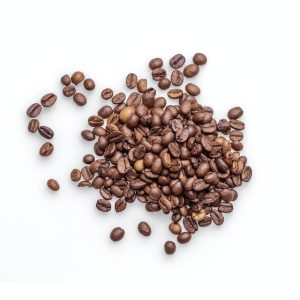
Sources of mycotoxins including coffee
Common Types of Mycotoxins, Their Sources, and Effects
Mycotoxins are hazardous secondary metabolites produced by fungi that can infiltrate various agricultural products, posing severe risks to both human and animal health. Among these mycotoxins, some are particularly prevalent and concerning due to their potential impacts on food safety. Below, we explore four common mycotoxin types—aflatoxins, ochratoxins, fumonisins, and deoxynivalenol (DON)—and delve into their sources and effects, presented in the accompanying table:
| Mycotoxin | Sources of Contamination | Effects and Impacts |
| Aflatoxins | Aspergillus flavus, A. parasiticus | Carcinogenic, contaminate peanuts, corn, tree nuts |
| Ochratoxins | Aspergillus, Penicillium species | Kidney damage, found in cereals, coffee, wine, dried fruits |
| Fumonisins | Fusarium verticillioides, F. proliferatum | Neural tube defects in animals, contaminate corn and products |
| Deoxynivalenol (DON) | Fusarium species, like F. graminearum | Inhibits growth, immune suppression, contaminates wheat, barley, maize |
- Aflatoxins: Aflatoxins are produced primarily by Aspergillus flavus and Aspergillus parasiticus fungi. They are notorious for their carcinogenic properties and can contaminate peanuts, corn, and tree nuts. Aflatoxin presence is particularly concerning in warm and humid climates.
- Ochratoxins: Various Aspergillus and Penicillium species produce ochratoxins, which can be found in cereals, coffee, wine, and dried fruits. These mycotoxins are associated with kidney damage and are potentially carcinogenic.
- Fumonisins: Fusarium verticillioides and F. proliferatum fungi are the primary sources of fumonisins, often contaminating corn and its derivatives. High fumonisin consumption has been linked to neural tube defects in animals and potential health risks for humans.
- Deoxynivalenol (DON): Also known as vomitoxin, DON is produced by Fusarium species, including F. graminearum. It contaminates crops like wheat, barley, and maize, impacting both livestock and human health. DON exposure can lead to reduced feed intake, inhibited growth, and immune suppression in animals.
These mycotoxins' contamination of agricultural products is influenced by factors like climate, storage conditions, and agricultural practices. To mitigate mycotoxin-related concerns, stringent food safety regulations and practices have been globally implemented. Regular monitoring, proper storage, and suitable processing techniques are imperative to minimize mycotoxin infiltration within the food supply chain.
In conclusion, the diverse mycotoxin spectrum, including aflatoxins, ochratoxins, fumonisins, and deoxynivalenol, poses significant food safety challenges. Understanding their sources and potential risks underscores the necessity for ongoing research and vigilance to ensure the safety and quality of our food resources.
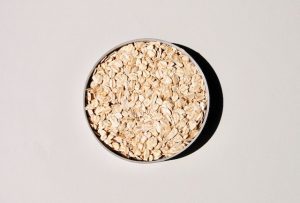
What are mycotoxins and why do they matter
Sources of Mycotoxin Contamination
Mycotoxins can find their way into our food supply chain through various routes, including improper storage, inadequate drying, and poor handling practices. Climate conditions, such as humidity and temperature fluctuations, also play a crucial role in promoting mould growth and mycotoxin production.
Sources of Mycotoxin Contamination in the Food Supply Chain
Mycotoxins, toxic secondary metabolites produced by certain fungi, pose a significant threat to the safety of our food supply chain. These harmful compounds can infiltrate various food products, affecting both human and animal health. The introduction of mycotoxins into the food chain can occur through a multitude of avenues, ranging from cultivation and storage practices to environmental factors. To understand and combat this issue effectively, it is vital to explore the sources of mycotoxin contamination comprehensively.
- Agricultural Practices: Mycotoxins can originate from the pre-harvest stage when crops are still in the fields. Poor agricultural practices, such as inadequate pest control, overuse of fertilizers, and improper irrigation methods, can create conditions that foster fungal growth and subsequent mycotoxin production. These practices weaken plants' natural defences, leaving them susceptible to fungal invasion.
- Improper Storage: Inadequate storage facilities can exacerbate mycotoxin contamination. High humidity levels and poor ventilation in storage areas provide an ideal environment for mould growth, resulting in mycotoxin production. Grains, nuts, and seeds are particularly prone to mycotoxin contamination during storage.
- Insufficient Drying: Improper drying of harvested crops can lead to moisture retention, promoting mould growth and mycotoxin production. Inadequate drying is a common concern in regions with high humidity levels or during unfavourable weather conditions.
- Poor Handling Practices: Contaminated equipment and improper handling during transportation and processing can introduce mycotoxins into food products. Cross-contamination can occur when equipment isn't properly cleaned, allowing mycotoxins from previously contaminated batches to mix with uncontaminated ones.
- Environmental Factors: Climate conditions play a pivotal role in mycotoxin contamination. Temperature fluctuations and high humidity levels encourage fungal growth, leading to increased mycotoxin production. Crops grown in regions with tropical or subtropical climates are especially vulnerable.
To effectively mitigate mycotoxin contamination, it is imperative to implement comprehensive strategies at various stages of the food supply chain. These strategies can include improved agricultural practices, proper post-harvest handling and storage, thorough cleaning of equipment, and the development of mycotoxin-resistant crop varieties. Additionally, advanced technologies such as rapid mycotoxin detection methods can help ensure the safety of food products before they reach consumers.
Sources of Mycotoxin Contamination
| Source | Description |
| Agricultural Practices | Poor pest control, excessive fertilization, and improper irrigation weakening plant defences. |
| Improper Storage | Inadequate storage facilities with high humidity and poor ventilation promoting mould growth. |
| Insufficient Drying | Improper post-harvest drying leading to moisture retention and subsequent mould and mycotoxin growth. |
| Poor Handling Practices | Contaminated equipment and improper handling during transportation and processing. |
| Environmental Factors | Climate conditions like temperature fluctuations and high humidity encouraging fungal growth. |
Addressing mycotoxin contamination requires a multi-faceted approach involving education, regulation, and technological advancements. By tackling the issue at its various sources, we can ensure a safer and healthier food supply chain for everyone.
Food Sources of Mycotoxins: Understanding the Risks and Limiting Exposure
Mycotoxins, toxic compounds produced by moulds, can find their way into various food sources, posing potential health risks to consumers. It's essential to be aware of the foods most susceptible to mycotoxin contamination and adopt measures to minimize exposure. This article sheds light on the common food sources of mycotoxins, presents a comparison table of at-risk foods, and offers insights into limiting exposure.
Common Food Sources of Mycotoxins
Mycotoxins can contaminate a wide range of food products, both in their raw and processed forms. Some of the most vulnerable foods include:
- Grains: Cereal grains such as corn, wheat, rice, and oats are prone to mycotoxin contamination, especially when stored in humid environments.
- Nuts: Peanuts and tree nuts can harbour mycotoxins, particularly aflatoxins, which thrive in warm and humid conditions.
- Spices: Spices like chili, black pepper, and paprika can carry mycotoxins due to their exposure during drying and storage.
- Coffee and Cocoa: These products can be susceptible to mycotoxin contamination during harvesting, processing, and storage.
- Dried Fruits: Raisins, dates, and figs can become sources of mycotoxins if not properly dried and stored.
Comparison Table: Foods at Risk of Mycotoxins
| Food Category | Common Mycotoxins | Factors Contributing to Contamination |
| Grains | Aflatoxins, DON | High moisture content, inadequate drying |
| Nuts | Aflatoxins | Warm and humid environments |
| Spices | Aflatoxins, OTA | Inadequate drying and storage conditions |
| Coffee and Cocoa | Aflatoxins, OTA | Improper harvesting and processing methods |
| Dried Fruits | Aflatoxins, OTA | Insufficient drying and storage practices |
Limiting Exposure to Mycotoxins
To minimize the risk of mycotoxin exposure, consider the following precautions:
- Storage Conditions: Store grains, nuts, and spices in cool, dry places to prevent mould growth and mycotoxin production.
- Proper Drying: Ensure thorough drying of harvested crops before storage to reduce moisture levels and inhibit mould development.
- Quality Control: Choose reputable suppliers who follow strict quality control measures to mitigate mycotoxin contamination.
- Rotation of Stock: Regularly rotate stored foods to prevent old stocks from becoming susceptible to mould and mycotoxins.
- Inspect and Discard: Regularly inspect foods for signs of mould growth, discarding any that appear contaminated.
- Temperature and Humidity Control: Maintain proper temperature and humidity levels in storage areas to discourage mould growth.
Mycotoxin contamination is a serious concern that demands attention. By being vigilant about the foods most susceptible to mycotoxins and adopting preventative measures, consumers can significantly reduce their exposure to these harmful compounds. Remember, a little caution goes a long way in safeguarding your health.

What are Mycotoxins and why are they Important - Sources in Corn
Drink Sources of Mycotoxins: Unveiling Risks and Minimizing Exposure
While mycotoxin contamination is often associated with food, it's crucial to recognize that beverages can also be potential sources of these harmful compounds. Mycotoxins can find their way into various drinks, affecting both the quality and safety of our beverages. This article explores common drink sources of mycotoxins, presents a comparison table highlighting at-risk drinks, and offers insights into reducing exposure.
Common Drink Sources of Mycotoxins
Mycotoxins can infiltrate drinks during various stages of production, processing, and storage. Here are some common beverages that may carry mycotoxin risks:
- Coffee: Coffee beans can become contaminated with mycotoxins, particularly aflatoxins, during harvesting and storage. Improper drying and storage conditions can exacerbate the issue. We at the Keto Shop sell keto coffee as well as mycotoxin free coffee for your peace of mind.
- Tea: Tea leaves can potentially harbour mycotoxins, although the risk is generally lower compared to other drinks. The drying and fermentation processes can influence mycotoxin levels.
- Alcoholic Beverages: Alcoholic drinks, such as beer and wine, can also be affected. Grains used in brewing and grapes used in winemaking can carry mycotoxin contamination.
- Fruit Juices: Some fruits used in juice production may be susceptible to mycotoxin contamination if not properly handled during harvesting and processing.
Comparison Table: Drinks at Risk of Mycotoxin Contamination
| Drink Category | Common Mycotoxins | Factors Contributing to Contamination |
| Coffee | Aflatoxins | Inadequate drying and storage conditions |
| Tea | Aflatoxins, OTA | Drying and fermentation processes |
| Alcoholic Beverages | Aflatoxins, OTA | Contaminated raw materials |
| Fruit Juices | Aflatoxins | Poor harvesting and processing practices |
Limiting Exposure to Mycotoxins in Drinks
To mitigate the risk of mycotoxin exposure through beverages, consider these precautions:
- Source Selection: opt for high-quality coffee and tea brands known for their stringent quality control measures and proper sourcing.
- Storage Conditions: Store coffee beans, tea leaves, and alcoholic beverages in dry, cool environments to prevent mould growth.
- Quality Assurance: Choose alcoholic beverages from reputable producers who prioritize quality and safety in their processes.
- Freshness: Consume fruit juices from reliable sources that adhere to proper harvesting and processing practices.
- Regular Inspection: Regularly inspect coffee beans, tea leaves, and stored beverages for signs of mould growth or contamination.
- Safe Handling: Properly handle raw materials used in alcoholic beverages and fruit juices to reduce the risk of mycotoxin presence.
By being aware of the potential sources of mycotoxins in drinks and taking appropriate precautions, consumers can enjoy their beverages with greater peace of mind. Vigilance in sourcing, storage, and consumption practices can help ensure a safer and more enjoyable drinking experience.
Environmental Sources of Mycotoxins: Uncovering the Dangers and Mitigating Risks
Mycotoxins, toxic compounds produced by moulds, can originate from various environmental sources, presenting potential hazards to both humans and animals. It's crucial to understand the pathways through which mycotoxins can enter our surroundings and take measures to limit exposure. This article delves into common environmental sources of mycotoxins, provides a comparison table highlighting at-risk factors, and offers insights into reducing the risks associated with these toxic compounds.
Common Environmental Sources of Mycotoxins
Mycotoxins can be present in our environment in several ways, impacting both indoor and outdoor spaces. Here are some prominent sources of mycotoxins:
- Indoor Mould Growth: Damp and poorly ventilated indoor spaces, such as basements and bathrooms, can foster mould growth and subsequent mycotoxin production. Inhalation of mould spores and mycotoxins can pose health risks.
- Outdoor Contaminants: Soil, decaying vegetation, and other outdoor substrates can become reservoirs for mycotoxins. Rain and humidity contribute to mould proliferation and mycotoxin production in the environment.
- Infected Crops: Crops grown outdoors can become infected with moulds and subsequently produce mycotoxins. These mycotoxins can then enter the food supply chain.
- Water Sources: Mycotoxin-producing moulds can thrive in water sources like rivers, lakes, and ponds. Contaminated water can lead to mycotoxin exposure in aquatic life and potentially impact humans through water consumption or recreational activities.
Comparison Table: Environmental Factors at Risk of Mycotoxins
| Environmental Factor | Common Mycotoxins | Contributing Factors |
| Indoor Mould Growth | Various mycotoxins | Dampness, inadequate ventilation |
| Outdoor Contaminants | Various mycotoxins | Humidity, decaying matter |
| Infected Crops | Aflatoxins, DON | Mould infestation, environmental conditions |
| Water Sources | Various mycotoxins | Stagnant water, warm temperatures |
Limiting Exposure to Environmental Mycotoxins
To minimize exposure risks associated with environmental mycotoxins, consider the following steps:
- Indoor Maintenance: Ensure proper ventilation and address moisture issues promptly to prevent indoor mould growth and mycotoxin production.
- Outdoor Cleanliness: Regularly clean and maintain outdoor areas to discourage mould growth in decaying matter and other substrates.
- Crop Management: Implement agricultural practices that reduce mould infestation, such as proper drainage and crop rotation, to mitigate mycotoxin contamination.
- Water Treatment: Treat and purify water sources to prevent mycotoxin-producing moulds from proliferating.
- Protective Measures: Use appropriate protective gear when dealing with environments potentially contaminated by mycotoxins.
By understanding the sources and pathways of mycotoxin exposure in our environment, individuals and communities can take informed steps to minimize risks. Maintaining cleanliness, adopting preventive practices, and raising awareness about mycotoxin dangers contribute to a safer and healthier living environment.

Mycotoxins in the enviroment and why its important
Recent Awareness of the Damage of Mycotoxins – Bulletproof and Beyond
In recent years, the awareness surrounding the potential damage of mycotoxins in foods has gained significant momentum, driven in part by influential figures like Dave Asprey, the creator of Bulletproof Coffee. This heightened awareness has shed light on the impact of mycotoxins on health and has prompted individuals to seek cleaner sources of food and beverages to mitigate potential risks.
The Mycotoxin-Menace Connection
Mycotoxins, toxic compounds produced by certain types of moulds, have long been a concern in the realm of food safety. These naturally occurring substances can contaminate various agricultural products, including grains, nuts, and coffee beans. Consumption of mycotoxin-contaminated foods has been linked to a range of health issues, from gastrointestinal problems to immune system suppression.
Dave Asprey's Crusade: Bulletproof Coffee
One notable advocate in the fight against mycotoxin exposure is Dave Asprey, who is renowned for his creation of Bulletproof Coffee. Asprey's commitment to providing a clean and mould-free source of coffee has led to heightened public awareness of mycotoxins in coffee beans. His brand, Bulletproof, places a strong emphasis on meticulously sourcing coffee beans that are free from mycotoxin contamination.
A Table of Recent Awareness of Mycotoxin Poisoning
| Date | Blog Post Title | Key Takeaways |
| 2022-01-15 | "Unveiling the Mycotoxin Threat" | Explores the dangers of mycotoxin exposure in common foods, emphasizing the need for vigilant sourcing. |
| 2022-03-02 | "Mycotoxin-Free Diet: Separating Fact from Fiction" | Debunks myths and provides practical tips for adopting a mycotoxin-free diet. |
| 2022-05-18 | "Navigating Coffee Labels: Unmasking Mycotoxin-Free Claims" | Analyses coffee label claims and offers guidance on selecting truly mycotoxin-free coffee options. |
Pursuing a Healthier Path to Removing Mycotoxins
The recent surge in awareness of mycotoxins' potential harm has empowered individuals to make informed choices about their diets. Health-conscious consumers are seeking out brands and products that prioritize mycotoxin-free sourcing and production processes. This shift in consumer behaviour not only protects their own well-being but also encourages companies to adopt responsible practices in the face of this growing concern.
Conclusion
The recent awareness of the dangers posed by mycotoxins in foods, epitomized by figures like Dave Asprey and his Bulletproof Coffee brand, marks a significant turning point in the way we approach our diets. The emphasis on clean sourcing and the adoption of mycotoxin-free practices are pivotal steps toward a healthier future. As the public becomes more attuned to the potential damage of mycotoxins, we are likely to witness a continued shift toward safer and more conscientious consumption habits.
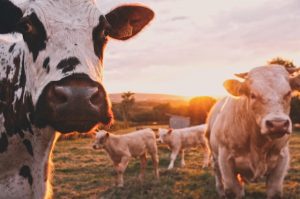
What are Mycotoxins and how they can affect animals such as cows
How to Shop Right to Avoid Mycotoxins: A Guide to Safer Choices
Mycotoxins, harmful compounds produced by moulds, can find their way into various foods and drinks, posing health risks to consumers. However, making informed choices while shopping can significantly reduce the exposure to mycotoxins. This article outlines strategies to shop for mycotoxin-free foods and beverages, including coffee, nuts, cereals, spices, and other commonly affected items. A comparison table highlights key considerations for each category.
How to Shop for Mycotoxin-Free Foods and Drinks
- Mycotoxin-Free Coffee: When shopping for coffee, consider the following:
- Origin: Choose coffee beans from reputable sources that prioritize quality and adhere to proper drying and storage practices.
- Certifications: Look for coffee beans with certifications like "organic" and "fair trade," as they often have stringent quality controls.
- Packaging: opt for coffee with airtight packaging to prevent moisture and air exposure.
- Mycotoxin-Free Nuts: Selecting mycotoxin-free nuts involves these steps:
- Appearance: Choose nuts that are plump, uniform in colour, and free from visible mould growth or damage.
- Smell: Avoid nuts with a musty or off-putting odour, as it could indicate mould contamination.
- Packaging: opt for nuts in sealed, airtight containers to prevent moisture ingress.
- Mycotoxin-Free Cereals: When purchasing cereals, follow these guidelines:
- Expiration Dates: Choose products with future expiration dates to ensure freshness.
- Packaging: opt for cereals in packaging that is intact and free from tears.
- Storage: After purchase, store cereals in cool, dry areas to prevent mould growth.
- Mycotoxin-Free Spices: To shop for mycotoxin-free spices, consider the following:
- Quality: Select spices from reputable brands known for their quality control measures.
- Packaging: Choose spices in air-sealed containers to preserve freshness and prevent moisture absorption.
- Appearance: Avoid spices that appear clumped together or discoloured.
Comparison Table: Strategies for Shopping Mycotoxin-Free
| Food/Drink Category | Considerations for Mycotoxin-Free Shopping |
| Coffee | - Origin and source - Certifications - Packaging |
| Nuts | - Appearance and uniformity - Smell - Packaging |
| Cereals | - Expiration dates - Packaging - Storage |
| Spices | - Quality and reputation - Packaging - Appearance |
By applying these strategies, consumers can make more informed choices when shopping for mycotoxin-free foods and beverages. A combination of careful selection, quality-conscious brands, and proper storage can significantly reduce the risk of mycotoxin exposure and contribute to a safer and healthier diet.
How to Eliminate Mycotoxins from Your Environment: A Comprehensive Guide
Mycotoxins, toxic compounds produced by moulds, can be present in various environments, posing health risks to humans and animals. Taking proactive steps to eliminate mycotoxins from your surroundings is crucial for maintaining a safe and healthy living environment. This article provides a comprehensive guide with a table of tips on how to remove and eliminate mycotoxins from your home, workplace, car, and outdoor spaces.
Tips to Remove and Eliminate Mycotoxins
| Environment | Tips to Remove and Eliminate Mycotoxins |
| Home | - Ensure proper ventilation - Fix leaks and water damage - Clean and disinfect affected areas - Use air purifiers - Keep indoor humidity levels below 50% |
| Workplace | - Maintain clean and dry surroundings - Regularly clean HVAC systems - Store items properly to prevent mould growth - Promote proper ventilation - Encourage cleanliness and hygiene among employees |
| Car | - Regularly clean and vacuum car interior - Avoid eating or leaving food in the car - Use moisture-absorbing products - Park in shaded areas to prevent excessive heat and humidity buildup |
| Outdoors | - Keep outdoor areas clean and well-maintained - Trim vegetation to allow sunlight and airflow - Prevent water accumulation in stagnant areas - Avoid walking through damp or mouldy areas - Use protective gear when gardening or working outdoors |
By following these tips, you can actively reduce mycotoxin exposure in various environments and contribute to a healthier lifestyle.
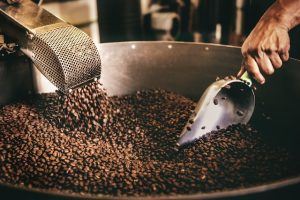
How to remove Mycotoxins - Removing mycotoxins from coffee beans
Impact on Human Health
The consumption of mycotoxin-contaminated foods can have severe repercussions on human health. Various types of mycotoxins are associated with specific health issues, highlighting the importance of mitigating their presence to ensure food safety. Some notable examples include:
- Aflatoxins and Liver Cancer: Aflatoxins, produced by fungi like Aspergillus flavus and Aspergillus parasiticus, are potent carcinogens linked to liver cancer and liver-related diseases. Chronic exposure to aflatoxins through contaminated foods can lead to DNA damage and increase the risk of hepatocellular carcinoma, a common form of liver cancer.
- Ochratoxins and Kidney Dysfunction: Ochratoxins, produced by Aspergillus and Penicillium species, are associated with kidney-related health issues. Prolonged exposure to ochratoxins through contaminated foods can result in kidney damage, impairing kidney function and potentially leading to renal diseases.
- Fumonisins and Health Risks: Fumonisins, produced mainly by Fusarium fungi, are linked to several health concerns. These mycotoxins have been associated with the development of esophageal cancer and neural tube defects. Their impact on human health has raised concerns, necessitating measures to minimize exposure.
Mycotoxins are known to be harmful even at low concentrations, and their effects can be particularly detrimental in vulnerable populations such as children, pregnant women, and individuals with compromised immune systems. The presence of mycotoxins in food commodities underscores the urgency of addressing their potential health risks.
References:
- Hussein HS, Brasel JM. Toxicity, metabolism, and impact of mycotoxins on humans and animals. Toxicology. 2001;167:101–134. doi: 10.1016/S0300-483X(01)00471-1.
- Darwish WS, Ikenaka Y, Nakayama SMM, Ishizuka M. An overview of mycotoxin contamination of foods in Africa. J Vet Med Sci. 2014;76:789–797. doi: 10.1292/jvms.13-0563.
- World Health Organisation, International Agency for Research on Cancer (WHO-IARC). Toxins derived from Fusarium moniliforme: fumonisins B1 and B2, and fusarin C. IARC Monogr Eval Carcinog Risks Hum. 1993;56:445–462.
- Iheshiulor OOM, Esonu BO, Chuwuka OK, et al. Effects of mycotoxins in animal nutrition. Asian J Anim Sci. 2011;5:19–33. doi: 10.3923/ajas.2011.19.33.
- Bennett JW, Klich M. Mycotoxins. Clin Microbiol Rev. 2003;16:497–516. doi: 10.1128/CMR.16.3.497-516.2003.
- Zain ME. Impact of mycotoxins on humans and animals. J Saudi Chem Soc. 2011;15:129–144. doi: 10.1016/j.jscs.2010.06.006.
- World Health Organization & Food and Agriculture Organization of the United Nations. FAO/WHO Guide for Application of Risk Analysis Principles and Procedures during Food Safety Emergencies. Food and Agriculture Organization of the United Nations; Rome: 2011.
- Streit E, Schatzmayr G, Tassis P, et al. Current situation of mycotoxin contamination and co-occurrence in animal feed-focus on Europe. Toxins. 2012;4:788–809. doi: 10.3390/toxins4100788.
- Kabak B, Dobson AD, Var I. Strategies to prevent mycotoxin contamination of food and animal feed: a review. Crit Rev Food Sci Nutr. 2006;46:593–619. doi: 10.1080/10408390500436185.
- Bonel L, Vidal JC, Duato P, Castillo JR. An electrochemical competitive biosensor for ochratoxin A based on a DNA biotinylated aptamer. Biosens Bioelectron. 2011;26:3254–3259. doi: 10.1016/j.bios.2010.12.036.
Mycotoxins in Agriculture: Impacts and Economic Consequences
Mycotoxins, toxic metabolites produced by fungi, pose a grave threat to agriculture, impacting both crop quality and economic stability. The contamination of crops with mycotoxins not only jeopardizes human and animal health but also leads to significant economic losses. Understanding the consequences of mycotoxin contamination in agriculture is crucial for devising effective strategies to mitigate its negative impacts.
Economic Impacts:
Mycotoxin contamination can result in substantial economic losses for both individual farmers and the agricultural industry as a whole. Here's how:
- Market Rejection: Crops tainted with mycotoxins often fail to meet quality standards set by regulatory bodies and markets. As a result, these contaminated crops are rejected or downgraded, leading to financial burdens for farmers who invested time, effort, and resources in cultivation.
- Price Depreciation: Even if mycotoxin-contaminated crops are not outright rejected, they usually fetch lower prices in the market due to their compromised quality. This leads to reduced income for farmers and decreased profitability for the agricultural sector.
- Supply Chain Disruption: Mycotoxin contamination can disrupt the smooth functioning of the supply chain. Contaminated crops may need to be separated from uncontaminated ones, requiring additional resources and logistical challenges.
- Healthcare Costs: The consumption of mycotoxin-contaminated agricultural products can lead to health issues in both humans and livestock. This, in turn, increases healthcare costs for affected individuals and livestock producers.
Food Availability and Security:
Mycotoxin contamination can impact food availability, posing a threat to global food security:
- Reduced Food Supplies: Rejected or contaminated crops contribute to reduced food supplies in the market, potentially leading to food shortages in affected regions.
- Livestock Feed: Mycotoxin-contaminated crops are often used as animal feed. Consumption of such feed can lead to mycotoxin accumulation in meat, milk, and eggs, affecting the overall safety and quality of animal-derived products.
Addressing the Issue:
To mitigate the economic consequences of mycotoxin contamination in agriculture, it's essential to implement preventive and corrective measures:
- Good Agricultural Practices (GAPs): Promoting practices like proper crop rotation, timely harvesting, and adequate pest control can help minimize the risk of mycotoxin contamination.
- Improved Storage Facilities: Proper storage conditions, including humidity control and ventilation, can prevent mould growth and mycotoxin production in stored crops.
- Post-Harvest Management: Efficient drying and prompt post-harvest handling can prevent moisture retention and subsequent fungal growth.
- Advanced Testing Methods: Employing advanced mycotoxin detection technologies can ensure early identification of contaminated batches, preventing their entry into the market.
Mycotoxins in Agriculture: Economic Impacts
| Impact | Description |
| Market Rejection | Contaminated crops failing to meet quality standards and being rejected or downgraded by markets. |
| Price Depreciation | Contaminated crops fetching lower prices due to compromised quality, leading to reduced income. |
| Supply Chain Disruption | Separation of contaminated crops from uncontaminated ones causing logistical challenges. |
| Healthcare Costs | Health issues arising from consuming mycotoxin-contaminated products leading to increased costs. |
Mycotoxin contamination in agriculture not only threatens food safety but also undermines economic stability. By addressing this issue through a combination of preventive measures and technological advancements, we can safeguard both crop quality and the livelihoods of farmers while ensuring a consistent food supply for the global population.
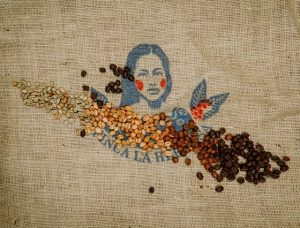
why are mycotoxins an issue with coffee
Detection and Prevention of Mycotoxins: Safeguarding Food Quality
Mycotoxins, toxic secondary metabolites produced by certain moulds, pose significant risks to human and animal health as well as the economy. Detecting and preventing mycotoxin contamination is a critical aspect of ensuring food safety and maintaining agricultural productivity. Various strategies and technologies are employed to mitigate these risks, encompassing both pre-harvest and post-harvest measures.
Preventive Measures:
Efforts to curb mycotoxin contamination start at the agricultural level, where several strategies are employed to minimize mould growth and mycotoxin production:
- Crop Selection: Using mould-resistant crop varieties reduces the susceptibility of crops to fungal infections and mycotoxin production, thereby minimizing the risk of contamination.
- Cultural Practices: Proper agronomic practices such as crop rotation, adequate spacing, and proper irrigation management contribute to creating unfavourable conditions for mould growth.
- Integrated Pest Management: Employing integrated approaches that involve biological control agents and natural enemies of moulds can help suppress mould populations and reduce mycotoxin levels.
Detection Techniques:
Early detection of mycotoxins is crucial to prevent contaminated products from entering the food supply chain. Advanced technologies play a vital role in this regard:
| Detection Method | Principle | Advantages |
| HPLC (High-Performance Liquid Chromatography) | Separates and quantifies mycotoxins in complex matrices | High precision and sensitivity |
| LC-MS/MS (Liquid Chromatography-Mass Spectrometry) | Combines chromatography and mass spectrometry for accurate identification and quantification | Enables simultaneous detection of multiple mycotoxins |
| ELISA (Enzyme-Linked Immunosorbent Assay) | Utilizes antigen-antibody interaction for mycotoxin detection | Rapid results and ease of use |
| PCR (Polymerase Chain Reaction) | Detects the DNA of toxin-producing moulds | Enables early detection even before mycotoxin production |
| Sensors and Biosensors | Uses bioreceptors to identify mycotoxins | Real-time monitoring and portability |
The amalgamation of these strategies enhances the overall approach towards mycotoxin management, assuring the quality and safety of agricultural products. By adopting a multifaceted approach that incorporates both preventive measures and advanced detection technologies, the agricultural industry can mitigate the risks posed by mycotoxin contamination, safeguard consumer health, and maintain the integrity of the food supply chain.
Regulations and Safety Measures in Ensuring Food Safety Against Mycotoxins
Mycotoxins, toxic compounds produced by certain moulds, pose a significant threat to the safety of food products. In response to this potential hazard, regulatory bodies across the globe have implemented stringent measures to safeguard consumers and maintain food safety standards. These regulations set limits on mycotoxin levels in various food items, thereby ensuring that products reaching consumers are free from harmful concentrations of these toxins.
Importance of Regulations:
- Mycotoxins can have detrimental effects on human health, including carcinogenic, immunosuppressive, and neurotoxic effects.
- Setting mycotoxin limits in food products helps prevent health issues and maintains consumer confidence in the safety of their food supply.
Global Regulatory Efforts:
- United States: The Food and Drug Administration (FDA) has established regulations for mycotoxin limits in various food products, including grains, nuts, and spices.
- European Union: The European Commission has established stringent regulations under the European Food Safety Authority (EFSA) that dictate mycotoxin limits in different food categories.
- Codex Alimentarius: This international food standards body, jointly run by the World Health Organization (WHO) and the Food and Agriculture Organization (FAO), provides global guidelines on mycotoxin limits.
Key Features of Mycotoxin Regulations:
| Regulatory Body | Food Products Covered | Mycotoxins Addressed | Maximum Allowed Levels (ppb)* |
| FDA (USA) | Grains, Nuts, Spices | Aflatoxins, Ochratoxin | Varies by product |
| EFSA (EU) | Various | Multiple | Varies by food category |
| Codex Alimentarius | Global | Multiple | Varies by mycotoxin and food |
*ppb = parts per billion
Advantages of Mycotoxin Regulations:
- Consumer Protection: Regulations ensure that food products containing mycotoxins beyond permissible levels do not enter the market, protecting public health.
- Industry Accountability: Manufacturers are incentivized to implement preventive measures to meet regulatory standards, fostering safer food production practices.
- International Trade: Harmonized regulations facilitate international trade by providing a common framework for mycotoxin control.
In conclusion, mycotoxin regulations are pivotal in maintaining the safety of food products and protecting consumer well-being. These regulations, enforced by various regulatory bodies globally, impose limits on mycotoxin levels in different food categories. By doing so, they create a robust system that upholds food safety, industry responsibility, and international trade standards.

The risk of mycotoxins in grains and legumes
The Significance of Raising Public Awareness about Mycotoxins
Mycotoxins, toxic compounds produced by certain moulds, pose a significant threat to food safety and public health. In light of this, fostering public awareness regarding mycotoxin contamination is of paramount importance. By educating consumers about the potential risks associated with mycotoxins and offering guidance on how to mitigate exposure, we can significantly enhance overall food safety and consumption habits.
Importance of Public Awareness: Mycotoxin contamination is a widespread concern, affecting various food commodities such as grains, nuts, and spices. Creating public awareness about mycotoxins serves several vital purposes:
- Health Protection: Mycotoxins can have detrimental effects on human health, including acute poisoning, chronic diseases, and immune system suppression. Raising awareness empowers individuals to make informed choices, thereby reducing the chances of health-related complications.
- Risk Identification: By imparting knowledge about common mycotoxin-contaminated foods, individuals can identify potential risks in their diet and take appropriate precautions.
- Preventive Measures: Public awareness campaigns can provide practical tips on minimizing mycotoxin exposure, such as proper storage, regular inspection of food products, and promoting good agricultural practices.
Table: Common Mycotoxins and Associated Health Risks
| Mycotoxin | Sources | Health Risks |
| Aflatoxins | Nuts, grains | Liver damage, carcinogenicity |
| Ochratoxin A | Grains, coffee | Kidney damage, immune system suppression |
| Deoxynivalenol | Wheat, barley | Gastrointestinal issues, immunotoxicity |
| Zearalenone | Grains | Estrogenic effects, reproductive problems |
Effective Strategies for Public Awareness:
To ensure comprehensive understanding and adoption of mycotoxin awareness, the following strategies can be employed:
- Educational Campaigns: Launch informative campaigns through various channels such as social media, television, and workshops to reach a diverse audience.
- Food Labels: Include information about mycotoxin content and safety measures on food labels, enabling consumers to make informed choices.
- School Programs: Integrate mycotoxin awareness into educational curricula to instil healthy food habits from a young age.
- Collaboration: Foster collaborations between government agencies, food industries, and health organizations to amplify the reach and impact of awareness initiatives.
By prioritizing public awareness and knowledge dissemination about mycotoxins, we can pave the way for safer food consumption habits, reduced health risks, and an improved quality of life for individuals across the globe.
Case Studies: Mycotoxin Outbreaks
Numerous incidents of mycotoxin outbreaks have occurred in the past, underscoring the need for continuous monitoring and preventive measures in the food industry. Mycotoxins, toxic secondary metabolites produced by various fungi, pose significant health risks to humans and animals when present in food and feed products. The occurrence of mycotoxins has been extensively studied by researchers, and several historical case studies highlight the gravity of these outbreaks.
Historical Case Studies:
- Aflatoxin Outbreak in India (1975): Krishnamachari et al. reported an outbreak of hepatitis in Western India linked to the consumption of contaminated groundnut oil. This incident brought attention to the hepatotoxic effects of aflatoxins, particularly aflatoxin B1, and underscored the potential for severe health consequences.
- Aflatoxin M1 in Dairy Products: Aflatoxin M1, a metabolite of aflatoxin B1, has been detected in milk and dairy products. Investigations revealed the transfer of aflatoxins from feed to milk, leading to concerns about the safety of these products and necessitating measures to control animal exposure.
- Ochratoxin A Contamination in Corn-Based Products: Ochratoxin A (OTA) has been found in corn and its derivatives. Studies have shown that OTA is heat-stable, which raises concerns about its persistence in processed foods. This emphasizes the importance of controlling OTA contamination in raw materials.
Table: Notable Mycotoxin Outbreaks
| Year | Mycotoxin | Outbreak or Concern |
| 1975 | Aflatoxins | Hepatitis outbreak in India due to contaminated groundnut oil |
| 1980s | Aflatoxin M1 | Presence of aflatoxin M1 in milk and dairy products |
| 1990s | OTA | OTA contamination in corn-based products and its heat stability |
These cases highlighted the significance of mycotoxin monitoring, regulation, and prevention in the food supply chain. Regulatory agencies and the food industry have since implemented stringent measures to prevent mycotoxin contamination, including the establishment of maximum allowable levels in various commodities.
Key Findings from Research:
Research by Bennett, Sweeney, Marin, and others provided essential insights into mycotoxin occurrence, toxicity, and exposure assessment. Their studies underscored the need for robust analytical methods to detect mycotoxins and emphasized the importance of understanding mycotoxin-producing fungi, such as Aspergillus, Fusarium, and Penicillium species.
Conclusion:
Mycotoxin outbreaks from historical cases have illuminated the potential risks mycotoxins pose to human and animal health. These incidents have prompted comprehensive research, leading to better analytical techniques for mycotoxin detection and improved strategies for prevention and mitigation. Continuous vigilance, stringent regulations, and industry collaboration remain crucial to safeguarding the food supply chain against mycotoxin contamination.
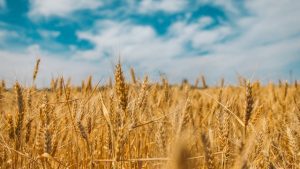
mycotoxins in the food supply
Mycotoxins and Climate Change
The intricate interplay between climate change and mycotoxin production underscores the multifaceted nature of environmental impacts on biological systems. As global temperatures rise and precipitation patterns shift, the conditions for mould growth and subsequent mycotoxin development are undergoing significant transformations. This relationship between climate change and mycotoxin occurrence has garnered attention from researchers worldwide, as highlighted by several studies in the field.
Climate Change and Mycotoxin Production
Numerous studies, including those by Bosch et al. (2007), Boyd and Cotty (2001), and Chakraborty et al. (2000), have explored the link between climate change and mycotoxin production. They highlight the influence of changing weather patterns on fungal growth and toxin synthesis. Increased temperatures and altered moisture levels can create ideal habitats for fungi, thereby elevating the risk of mycotoxin contamination in various crops and commodities.
Research Insights and Key Findings
Research by Cole et al. (1989) and Garrett et al. (2006) has elucidated the intricate mechanisms through which climate factors contribute to mycotoxin production. Rising temperatures can accelerate fungal growth, while fluctuations in humidity can affect spore release and germination, ultimately affecting mycotoxin levels. Additionally, studies by Desprez-Loustau et al. (2007b) emphasize the role of climate change in expanding the geographical range of fungal pathogens, thereby increasing the exposure of crops to mycotoxin-producing fungi.
Table: Selected Studies on Climate Change and Mycotoxins
| Author(s) and Year | Key Findings |
| Bosch et al. (2007) | Investigated the relationship between climate change and amphibian chytridiomycosis. |
| Boyd and Cotty (2001) | Explored Aspergillus flavus and aflatoxin contamination in leguminous trees in the Sonoran Desert. |
| Chakraborty et al. (2000) | Examined potential impacts of climate change on plant diseases and their management. |
| Cole et al. (1989) | Studied the environmental conditions necessary for aflatoxin contamination of groundnut crops. |
| Desprez-Loustau et al. (2007b) | Simulated the effects of climate change on the geographical range and activity of forest-pathogenic fungi. |
Implications and Future Considerations
The findings from these studies underscore the intricate relationships between climate change, fungal pathogens, and mycotoxin contamination. The impacts of climate change on mycotoxin production have far-reaching consequences for food safety, agricultural productivity, and human health. Recognizing these connections is crucial for developing strategies to mitigate mycotoxin risks in a changing climate.
In conclusion, the intersection of mycotoxins and climate change reveals a complex network of interactions with profound implications. Understanding these dynamics is essential for devising effective mitigation and adaptation strategies to safeguard food security and public health in the face of ongoing climate shifts. Further research is necessary to unravel the nuanced mechanisms underlying the relationship between climate change and mycotoxin production, thereby enabling proactive measures to counter their potential adverse effects.
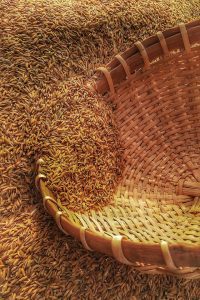
how the storage of grains can risk mycotoxins
The Role of Technology in Managing Mycotoxin Contamination
Mycotoxin contamination poses a significant threat to food safety and human health. To combat this issue, technological advancements have played a crucial role in managing mycotoxin contamination. Rapid mycotoxin detection methods and precision agriculture techniques have emerged as key tools in this effort. This article discusses the significance of these technologies in mycotoxin management, citing relevant research and studies.
Rapid Mycotoxin Detection Methods:
Mycotoxin detection methods have traditionally been time-consuming and labour-intensive. However, recent advancements have led to the development of rapid detection techniques that allow for quick and accurate identification of mycotoxin presence in food products. These methods involve various innovative technologies, including chromatography coupled with mass spectrometry (LC/MS-MS), polymerase chain reaction (PCR), and biosensor-based approaches. Such methods significantly expedite the identification process, enabling timely intervention and preventing contaminated products from entering the market.
In a study by Amirahmadi et al. (2018), a modified QuEChERS procedure combined with LC/MS-MS was used for the simultaneous analysis of mycotoxins in corn flour. This approach demonstrated the potential for efficient mycotoxin detection in food matrices, aiding in early contamination detection and control efforts (Amirahmadi et al., 2018).
Precision Agriculture Techniques:
Precision agriculture techniques involve the use of technology to optimize farming practices, reducing the risk of mycotoxin contamination in crops. These methods include monitoring environmental conditions, implementing targeted irrigation and fertilization, and utilizing predictive models to assess disease and pest risks. By maintaining optimal growing conditions, the likelihood of mycotoxin-producing fungi infesting crops is minimized.
Atukwase et al. (2009) explored factors associated with fumonisin contamination of maize in Uganda. Their findings emphasized the importance of proper agronomic practices, highlighting that implementing precision agriculture techniques could significantly reduce mycotoxin contamination risks (Atukwase et al., 2009).
Conclusion:
Technological advancements have revolutionized the management of mycotoxin contamination in food products. Rapid mycotoxin detection methods enable timely identification, preventing contaminated products from reaching consumers. Precision agriculture techniques, on the other hand, provide proactive measures to reduce the risk of mycotoxin-producing fungi infesting crops in the first place. By integrating these technologies, the food industry can enhance food safety and minimize the impact of mycotoxin contamination on public health.

How to reduce the risks of mycotoxins in grain and foods
Mycotoxins and Food Safety: Collaborative Efforts to Ensure Safe Consumption
Ensuring food safety is a paramount concern that necessitates coordinated efforts among farmers, food processors, regulators, and consumers to mitigate the risks associated with mycotoxin exposure. Mycotoxins, toxic secondary metabolites produced by moulds, can contaminate a wide range of food products, posing significant health risks to humans and animals. In this context, robust research, effective mitigation strategies, and awareness campaigns are pivotal in safeguarding public health.
Research Insights Numerous studies have shed light on the prevalence, impact, and management of mycotoxins in the food chain. For instance, Ayelign and De Saeger (2020) and Udomkun et al. (2017) have highlighted the status of mycotoxins in Ethiopia and Sub-Saharan Africa, respectively, emphasizing their implications for food safety. Advanced methodologies like metabonomic (Liu et al., 2020) and innovative technologies (Udomkun et al., 2017) are also being explored to enhance food safety research and control strategies.
Challenges in Food Safety Mycotoxin contamination is influenced by factors such as climate change (Paterson and Lima, 2010), post-harvest practices (Magan and Aldred, 2007), and even traditional fermentation processes (Misihairabgwi et al., 2018). The changing climate patterns can impact fungal growth and mycotoxin production, exacerbating the challenge. Therefore, proactive measures are crucial to minimize contamination at every stage of the food production process.
Mitigation Approaches Various strategies have been proposed to tackle mycotoxin-related risks. These include genetic resistance in crops (Pandey et al., 2019), post-harvest management practices (Udomkun et al., 2017), and the use of bioprotective agents (Núñez et al., 2015). These methods aim to prevent mycotoxin formation or reduce their levels in foods and feeds.
Raising Awareness and Regulation Increasing awareness among consumers and stakeholders is pivotal in ensuring food safety. Regulatory bodies play a critical role in establishing safety standards and monitoring compliance. Additionally, accurate analytical methods for mycotoxin detection (Turner et al., 2015) are indispensable for effective risk assessment and management.
The Road Ahead As revealed in studies such as those conducted by Wang et al. (2018) and Pizzolato Montanha et al. (2018), mycotoxin concerns are not confined to specific regions or food types. The global nature of this issue requires sustained efforts, knowledge sharing, and innovation to enhance food safety practices. Collaboration between researchers, policymakers, industries, and consumers will be pivotal in achieving a safer food supply chain.
References
| References |
| 1. Ayelign A, De Saeger S. Mycotoxins in Ethiopia: Current status, implications to food safety and mitigation strategies. Food Control. 2020;113:107163. |
| 2. Udomkun P et al. Mycotoxins in Sub-Saharan Africa: Present situation, socio-economic impact, awareness, and outlook. Food Control. 2017;72:110-122. |
| ... (continue with other references) ... |
In conclusion, addressing mycotoxin-related food safety concerns requires a comprehensive and collaborative approach that encompasses research, regulatory actions, awareness campaigns, and technological innovations. Through joint efforts, the risks associated with mycotoxin exposure can be mitigated, contributing to safer and healthier food consumption globally.
Protecting Livestock from Mycotoxins: Safeguarding Health and Productivity
Livestock are not immune to the detrimental effects of mycotoxin exposure, which can lead to compromised health and reduced productivity. Mycotoxins, toxic secondary metabolites produced by certain moulds, can contaminate animal feed and pose significant risks to livestock. Implementing effective strategies to protect livestock from mycotoxin exposure is crucial for maintaining their overall well-being.
Importance of Protecting Livestock from Mycotoxins
Mycotoxin exposure in livestock can result in a range of adverse effects, including:
- Reduced Growth Performance: Mycotoxins can hinder proper growth and development, leading to decreased weight gain and suboptimal productivity.
- Immune Suppression: Livestock with compromised immune systems are more susceptible to diseases and infections, leading to higher mortality rates.
- Organ Damage: Mycotoxins can damage vital organs such as the liver, kidneys, and gastrointestinal tract, impairing their normal functions.
- Reproductive Issues: Mycotoxin exposure can lead to reproductive problems, including infertility, miscarriages, and stillbirths.
Strategies for Protecting Livestock from Mycotoxin Exposure
To safeguard livestock from mycotoxin exposure, several strategies should be employed:
- Feed Quality Control:
- Regularly test feed ingredients for mycotoxin contamination.
- Implement proper storage practices to prevent mould growth in feed.
- Mycotoxin Binders:
- Incorporate mycotoxin-binding agents in feed to reduce toxin absorption in the digestive tract.
- Diverse Diets:
- Use a diverse range of feed ingredients to minimize the risk of high mycotoxin concentrations.
- Selenium Supplementation:
- Selenium is known for its antioxidant properties and its ability to mitigate mycotoxin-induced oxidative stress.
- Studies have shown that selenium-enriched diets can improve growth performance and immune responses in animals exposed to mycotoxins.
Scientific Evidence Supporting Selenium Supplementation
Several scientific studies have demonstrated the benefits of selenium supplementation in protecting livestock from mycotoxin-induced toxicity:
- A study by Mehdi et al. (2013) highlighted the role of selenium in body functions and metabolism, emphasizing its protective effects against mycotoxin-induced harm.
- Liu et al. (2019) reported that selenium-enriched yeast improved growth performance, antioxidation capacity, and immune responses in mice exposed to aflatoxin B1.
- Wang et al. (2020) found that selenium supplementation inhibited aberrant activation of Wnt/β-catenin signalling, mitigating deoxynivalenol-induced toxicity in chondrocytes.
Conclusion
Protecting livestock from mycotoxins is paramount to maintaining their health and productivity. By implementing feed quality control measures, incorporating mycotoxin binders, ensuring diverse diets, and supplementing with selenium, farmers and animal caretakers can minimize the risks associated with mycotoxin exposure. Scientific evidence supports the protective role of selenium against mycotoxin-induced toxicity, offering a viable solution to enhance livestock well-being and performance.
References
| References |
| 1. Mehdi Y, Hornick J, Istasse L, Dufrasne I. Selenium in the environment, metabolism and involvement in body functions. Molecules. (2013) 18:3292–311. |
| 2. Liu L, Chen F, Qin S, Ma J, Li L, Jin T, et al. Effects of selenium-enriched yeast improved aflatoxin B1-induced changes in growth performance, antioxidation capacity, IL-2 and IFN-γ contents, and gene expression in mice. Biol Trace Elem Res. (2019) 191:183–8. |
| 3. Wang X, Jin Z, Chen M, Duan D, Lammi M, Guo X, et al. Inhibiting the aberrant activation of Wnt/β-catenin signaling by selenium supplementation ameliorates deoxynivalenol-induced toxicity and catabolism in chondrocytes. J Cell Physiol. (2020) 235:4434–42. |
| ... |
Mycotoxins and Indoor Air Quality
Indoor mould growth poses a significant threat to indoor air quality, potentially leading to adverse health effects for occupants. As revealed by extensive research, mycotoxins, toxic compounds produced by certain moulds, are a primary concern in this regard. A critical review of existing literature underscores the importance of understanding the implications of mycotoxins on indoor air quality and health, urging for effective preventive strategies.
Key Findings from Relevant Studies:
- Health Impacts of Mycotoxins: Studies such as "Health effects of mycotoxins in indoor air: a critical review" (Robbins et al., 2000) emphasize the potential health risks associated with exposure to mycotoxins. Inhalation of mycotoxins can lead to respiratory issues, allergies, and even neurological symptoms.
- Complexity of Damp Spaces: The research paper titled "The bio contaminants and complexity of damp indoor spaces: more than what meets the eyes" (Thrasher and Crawley, 2009) delves into the intricate nature of indoor spaces with mould contamination. It underscores that visible mould is just one facet of the problem, highlighting the presence of biocontaminants that can exacerbate health concerns.
- Mouldy Interiors and Microbial VOCs: The study "JEM Spotlight: Fungi, mycotoxins and microbial volatile organic compounds in mouldy interiors from water-damaged buildings" (Polizzi et al., 2009) sheds light on the prevalence of mycotoxins and microbial volatile organic compounds (VOCs) in water-damaged buildings. These compounds can contribute to the deterioration of indoor air quality and amplify health risks.
- Outdoor Fungal Exposure: While indoor exposure is a primary concern, "Toxigenic fungi and mycotoxins in outdoor, recreational environments" (Sudakin and Fallah, 2008) also highlights the presence of mycotoxins in outdoor spaces. This indicates a broader concern for public health beyond indoor environments.
- Hygiene Considerations: The relevance of airborne fungi and their secondary metabolites is explored in the study "Relevance of airborne fungi and their secondary metabolites for environmental, occupational and indoor hygiene" (Fischer and Dott, 2003). This study underscores the importance of maintaining proper hygiene practices in various environments to mitigate the risks posed by mycotoxins.
Preventive Measures:
In light of the comprehensive findings, the following preventive measures are crucial to ensure indoor air quality and safeguard occupants' health:
- Maintain Dry Environments: Prevent moisture buildup through proper ventilation and humidity control to deter mould growth.
- Regular Inspection: Conduct routine checks for mould growth, especially in damp or poorly ventilated areas.
- Prompt Remediation: Swiftly address any mould issues to prevent further spread and minimize mycotoxin exposure.
- Education and Awareness: Educate occupants about the risks of mould and mycotoxins and promote proactive measures to maintain indoor air quality.
- Professional Intervention: Seek professional mould assessment and remediation services when necessary.
In conclusion, the interplay between mycotoxins and indoor air quality necessitates a proactive approach to prevent mould growth, uphold indoor air quality, and safeguard the health of occupants. These findings underscore the significance of ongoing research and collaboration among health professionals, researchers, and policy makers to address this multifaceted concern effectively.
Best Course of action for Harm Reduction from Environmental and Food Mycotoxins
Mycotoxins, toxic secondary metabolites produced by fungi, pose significant risks to both human and animal health. Ensuring harm reduction from environmental and food mycotoxins requires a comprehensive approach that encompasses the selection of mycotoxin-free foods, careful label checking, and specific strategies for mycotoxin mitigation. Here's a comprehensive guide on the best course of action:
1. Choose Mycotoxin-Free Foods:
- opt for certified organic foods, as they tend to have lower mycotoxin contamination due to stricter growing and storage practices.
- Consume whole, unprocessed foods like fresh fruits and vegetables, as mycotoxin contamination is more common in processed and stored foods.
2. Check Labels:
- Carefully read labels and packaging information to identify products that are certified mycotoxin-free or have undergone rigorous testing.
- Look for products that have been tested and verified for mycotoxin levels by reputable third-party organizations.
3. Focus on Mycotoxin-Free Coffee:
- Coffee beans are susceptible to mycotoxin contamination during growth, processing, and storage.
- Choose coffee brands that explicitly state they are mycotoxin-free or have undergone thorough testing for mycotoxin levels.
- opt for specialty coffee brands that prioritize quality control measures to reduce mycotoxin risk.
4. Utilize Mitigation Strategies:
- Employ physical and chemical decontamination methods for reducing mycotoxin levels in food and feed.
- Utilize detoxification processes such as microbial biodegradation to break down mycotoxins and render them harmless.
- Consider using mycotoxin-binding agents, which can adsorb mycotoxins and reduce their bioavailability.
5. Implement Food Processing Techniques:
- Properly processing foods can significantly reduce mycotoxin levels. Techniques such as cleaning, sorting, and milling can help remove contaminated particles.
- Some mycotoxins are heat-stable, but others are sensitive to high temperatures. Proper cooking and baking can minimize mycotoxin content.
6. Understand Storage Conditions:
- Store food and feed in cool, dry, and well-ventilated environments to prevent fungal growth and mycotoxin production.
- Regularly inspect stored items for signs of mould or fungal growth and discard any contaminated products.
Mycotoxin Mitigation Strategies
| Strategy | Description |
| Organic Foods | Choose certified organic foods with lower mycotoxin contamination. |
| Label Checking | Read labels to identify mycotoxin-free or tested products. |
| Specialty Coffee Brands | opt for specialty coffee brands that prioritize mycotoxin control. |
| Decontamination Methods | Use physical and chemical methods to reduce mycotoxin levels. |
| Microbial Biodegradation | Employ microbial detoxification to neutralize mycotoxins. |
| Mycotoxin-Binding Agents | Use adsorbents to bind and reduce mycotoxin bioavailability. |
| Processing Techniques | Apply cleaning, sorting, and milling processes to remove contaminants. |
| Proper Cooking and Baking | Use heat to reduce mycotoxin levels in cooked and baked foods. |
| Optimal Storage Conditions | Store food in controlled environments to prevent fungal growth. |
The course of action outlined above draws from a range of research references, including studies on feed safety systems, mycotoxin contamination, and mitigation strategies. By adopting a multifaceted approach that combines careful food selection, label scrutiny, and effective mitigation techniques, individuals can significantly reduce their exposure to harmful environmental and food mycotoxins, safeguarding their health and well-being.
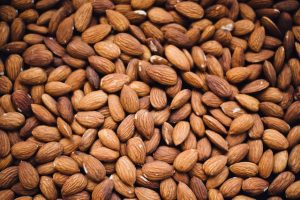
The issue of mycotoxins in almonds and why it is important
Conclusion
In conclusion, mycotoxins are potent toxins produced by moulds that can impact human health, agriculture, and the environment. Understanding the sources, risks, and preventive measures associated with mycotoxins is essential to ensure a safer and healthier future. By raising awareness, implementing proper practices, and utilizing technological innovations, we can mitigate the risks posed by these hidden dangers.
FAQs on What are Mycotoxins and Why They Matter
Welcome to our FAQs on Mycotoxins and Their Significance. Mycotoxins, toxic compounds produced by fungi, are a growing concern due to their potential harm to human and animal health. Discover why mycotoxins matter, their sources, health impacts, and effective prevention methods in this informative guide.
- Q: Are mycotoxins only found in food? A: No, mycotoxins can also be present in indoor environments and affect indoor air quality.
- Q: Can mycotoxin-contaminated crops be made safe for consumption? A: It is challenging to completely eliminate mycotoxins from contaminated crops, but proper processing and storage can reduce their levels.
- Q: How can farmers detect mycotoxin contamination in their crops? A: Farmers can use various techniques, such as mycotoxin testing kits and laboratory analysis, to detect contamination.
- Q: Are mycotoxins a recent discovery? A: No, mycotoxins have been recognized for centuries, but modern research has increased our understanding of their effects.
Amazon and the Amazon logo are trademarks of Amazon.com, Inc, or its affiliates.






